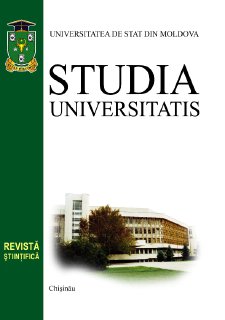DEGRADAREA/MINERALIZAREA DICLOFENACULUI SODIC DIN SOLUȚII APOASE PRIN APLICAREA FOTOLIZEI ȘI A PROCESELOR DE OXIDARE AVANSATĂ
Larisa MOCANU, Maria GONȚA, Vera MATVEEVICI Universitatea de Stat din Moldova
Аннотация
DEGRADATION/MINERALIZATION OF DICLOFENAC SODIUM FORM AQUEOUS SOLUTIONS USING PHOTOLYSIS AND ADVANCED OXIDATION PROCESS Diclofenac sodium salt (2-[(2,6-Dichlorophenyl) amino] benzeneacetic acid sodium salt) is one of the most widely used anti-inflammatory drugs, with a high level of consumption (1000 tons annually), which leads to its bioaccumulation in waters of surface, sediments and sludges. Having a complex composition, low biodegradability and high persistence, it is difficult to remove by conventional or biological methods. So, the application of AOPs are an effective alternative to reduce or eliminate it from residual effluents. It is known that the viability of these methods depends on the source of hydroxyl radical (OH) formation. The main goal of this study was to determine the optimal oxidation conditions of diclofenac sodium by applying direct, induced photolysis, and advanced oxidation processes, in order to highlight the most efficient degradation/mineralization methods. According to the values of reaction rates and half-times obtained after the degradation of 50 mg/L diclofenac sodium salt solution, the series of DCF degradation by applying photolysis and AOPs can be elaborated as follows: DCF/Fe2+/H2O2 > DCF/Fe2+/H2O2/UV > DCF/H2O2/UV > DCF/TiO2/UV > DCF/UV > DCF/H2O2/US > DCF/TiO2/H2O2/UV. The obtained results reveal a high degradation/mineralization performance (81.6%) when oxidizing 50 mg/L DCF with Fenton's reagent. Thus, the Fenton oxidation process of sodium diclofenac, under optimal experimentally established conditions, can be proposed as an effective treatment for the decontamination of waste water containing anti-inflammatory drugs, because the degradation process has been carried out with a rate constant k of 2.7 · 10-3 s-1 , a reaction rate of 2.1 ·10-7 molL-1s-1 , and a half-life of 257 s. Keywords: diclofenac sodium salt, photolysis, advanced oxidation processes, oxidation/mineralisation, degradation.


